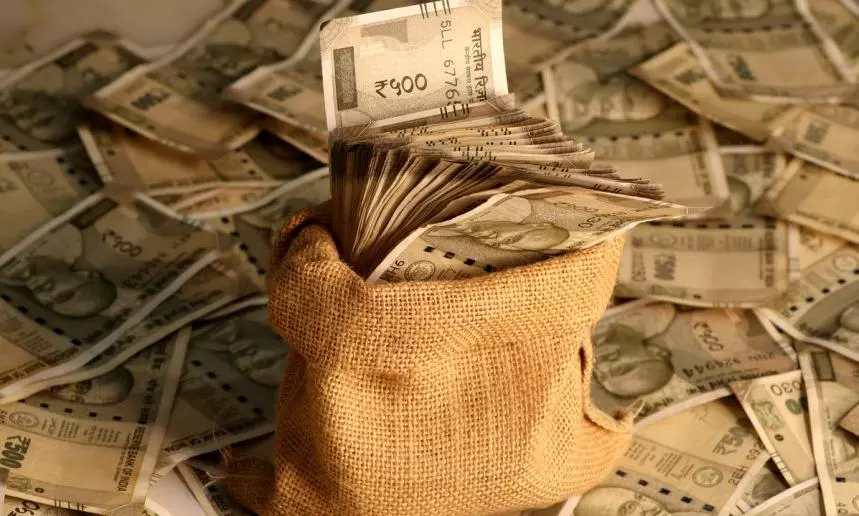
Hefty govt spending to stimulate economy sees a decline in cash reserves
The government aims to stimulate economic activities and support various sectors by infusing more funds.

The financial ecosystem has shown significant changes in recent weeks, most notably in the government cash balance.
This is crucial as the cash balance directly indicates the government's fiscal health and spending habits. As of September 29, 2023, the government cash balance dwindled to approximately Rs 3.6 trillion (Rs 3,60,000 crore), down from Rs 3.8 trillion (Rs 3,80,000 crore) just a week prior, a Kotak Institutional Equities said in a note to the investors.
Current projections suggest a further reduction to an estimated Rs 2.3 trillion (Rs 2,30,000 crore), primarily driven by hefty government spending. Entering the subsequent week, analysts anticipate a continued downward trajectory, pegging the cash balance to further ease to Rs 1.9 trillion (Rs 1,90,000 crore). One of the pivotal factors behind the decline in the government's cash balance is the marked increase in its expenditures.
This surge in government spending has a two-fold effect:
Liquidity Boost: The financial system witnessed a shift from a deficit to a surplus in system liquidity. Specifically, as of October 6, 2023, the surplus amounted to Rs 27.6 billion (Rs 2,760 crore), compared to a significant deficit of Rs 302 billion (Rs 30,200 crore) just a week before.
“Going ahead, we expect system liquidity surplus to improve amid continued government spending and the reversal of the I-CRR (Incremental cash reserve ratio) impact (A reversal of I-CRR would imply that the central bank is releasing the extra reserves back into the banking system, which would increase liquidity. However, with RBI’s preference for tight liquidity (given the current durable liquidity of Rs 2.4 trillion), the injection of liquidity from the I-CRR reversal could soon be absorbed through OMO sales,” Kotak Institutional Equities said in a note to investors.
Any extra liquidity introduced into the banking system due to the reversal of I-CRR (i.e., releasing the extra reserves) might be taken out or "absorbed" by selling government securities through OMOs. The central bank could use OMO sales as a countermeasure to ensure the money supply does not increase excessively due to the I-CRR reversal.
Interest rate movements:
Due to the increased liquidity, the weighted average overnight money market rates, which dictate short-term lending rates between financial institutions, decreased. This rate dropped by 5 basis points to 6.75 per cent.
However, the RBI's inclination towards maintaining tight liquidity might counterbalance this surplus. With the current durable liquidity at roughly Rs 2.4 trillion (Rs 2,40,000 crore), any additional liquidity is expected to be absorbed quickly, especially with the anticipated OMO (open market operations involving buying and selling government securities) sales.
The significant government spending reflects its proactive role in bolstering the economy. The government aims to stimulate economic activities and support various sectors by infusing more funds. The robust government spending indirectly impacts the liquidity in the financial system. As observed, the spending led to improved system liquidity.
Bond market reactions:
Global and domestic bond markets are closely intertwined with the government's fiscal operations. The recent fluctuations in the US and Indian bond markets can partly be attributed to changes in cash balances and subsequent liquidity adjustments.
“We expect the RBI to use OMO sales (as and when necessary) to keep bond yields higher to avoid financial instability from narrowing interest rate differentials with DMs. Meanwhile, the recent spike in crude oil prices due to the Middle-East geopolitical tensions will be the key incremental risks ahead while US yields inch lower on a flight to safety.” Accordingly, the note said that we expect a 10-year yield to trade in the 7.25-7.50 per cent soon.
RBI's monetary policy stance:
The changes in government cash balances, system liquidity, and the bond market also shape the monetary policy decisions made by the RBI. The central bank's recent meetings and announcements echo its continuous focus on managing inflation and ensuring financial stability.
Inflation and economic outlook:
The changes in the cash balance are likely to impact future inflation rates and the overall economic scenario. Analysts are keenly watching upcoming economic indicators, including headline CPI (consumer price index) inflation, food and beverage inflation, and WPI (wholesale price index) inflation, to gauge the broader economic impact.

